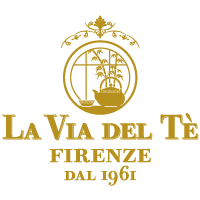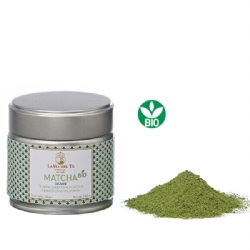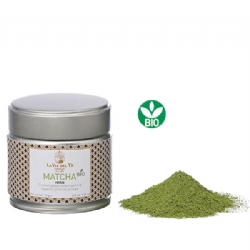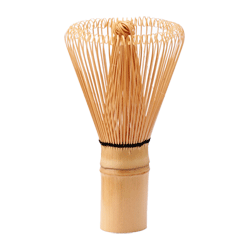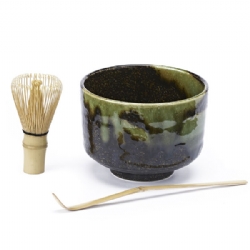
The Japanese tea ceremony
The Tea Ceremony Chanoyu, also known as Chado or Sado ("The Way of Tea"), is one of the most known traditional Japanese arts.
The tea tasted and prepared is Matcha, green tea powder.
Permanently codified by Sen no Rikyu, the famous Tea Master, this art continues the tradition founded by the Zen monks and is based on the concept of Wabi-cha, in the pursuit of the beauty of simplicity and sobriety.
The Japanese Tea Ceremony is based on four basic concepts: Harmony, Respect, Purity and Tranquility.
The ceremony takes place in small wooden buildings located in gardens adorned with water and rocks.
The tea room and the tools express a real sense of simplicity, in pursuit of true refinement.
The ritual involves the host who prepares the tea and guests, following strict rules of dress and etiquette. The teahouse includes a tea room, a small waiting room and a path that crosses the garden. The basic tools used are the tea bowl (Chawan), the tea container (Chaire), the bamboo whisk (Chasen) and the bamboo tea-scoop (Chashaku).
The complete ceremony lasts four hours: during the first part, the host serves a light meal of seven courses (Keiseki), followed by an interval and then the ceremony.
During this, the host serves Koicha, a thick tea, and Usucha, a lighter tea. He washes the bowl and wipes it with a particular cloth tissue, cleans the scoop and the whisk. After that, he picks up the tea powder from the tea container and pours it into a bowl, adds the hot water and whisks until getting the so-called "jade foam".
The guests come to pick it up on their knees, bow down, and put the bowl in the palm of their left hand, supporting it with the right. After a sip, the guest praises the aroma, wipes the point from which he drank and passes the bowl to the second guest, who drinks and wipes the bowl in the same way.
